Inscriptions, texts nos. 1-21
Browse the RIAo Corpus [http://oracc.museum.upenn.edu/riao/pager/]
1 2 3 4 5 6 7 8 9 10 11 12 13 14 15 16 17 18 19 20 21
1
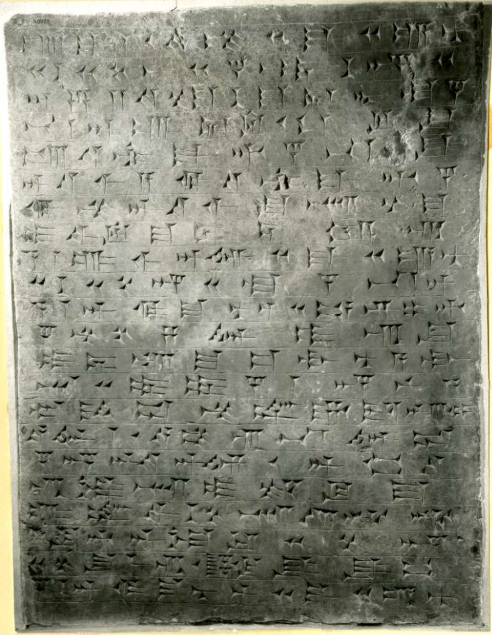
BM 118925 © The Trustees of the British Museum
This text is inscribed on some very large slabs found at Nimrud. Exemplar no. 2 (see image) measures 195.58 x 144.78 x 15.24 cm. These slabs were originally part of the pavement, sued as door sills. The text begins with the royal name and epithets followed by an extremely long genealogy that goes back about one thousand years (cf. also the Assyrian King List [/riao/kinglists/assyriankinglist/assyriankinglist/index.html]). While the main exemplar ends here, the other two end earlier. According to Grayson, this fact could suggest that these slabs were the first of a series of slabs engraved with the annals of Adad-nārārī III.
Access the composite text [http://oracc.museum.upenn.edu/riao/Q004749/] of Adad-nārārī III 01.
Bibliography
2 - Antakya Stele
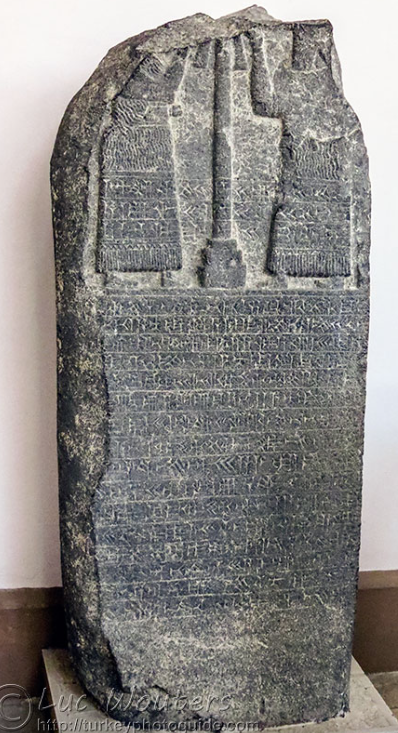
11832 © Luc Wouters
A stele found (127 x 52 x 31 cm) not far from the city of Antakya, in modern Turkey, in the area of the Orontes, bears and inscription which records the establishment of a border between the domains of Zakur of Hamat and those of Ataršumki of Arpad. The border is set by king Adad-nārārī III and by his field marshal (turtānu) Šamšī-ilu, who are intrensigly recorded together on the stele and who could be represented by the two fragmentary figures on the top of the broken stele. The text ends with curses to anyone who damages the monument, but also to anyone who violates the border.
Access the composite text [http://oracc.museum.upenn.edu/riao/Q004750/] of Adad-nārārī III 02.
Bibliography
3 - Pazarcık Stele
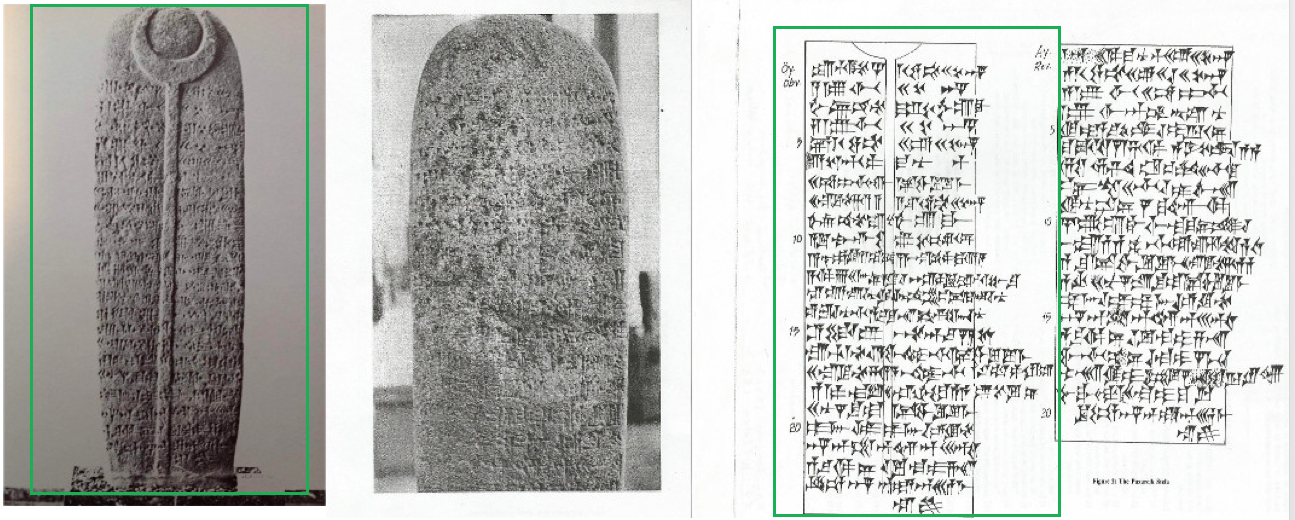
KMT -. © Anadolu Yazıları [https://anatolianscripts.com/script/pazarcik-steli/]
A stone stele (140 x 44 x 16.5 cm) found in a village Kızkapanlı, close to modern Maraş, during the construction of the Pazarcık dam, bears an inscription recording the establishment of a border between the states of Kummuḫ and Gurgum. The obverse of the stele is engraved with the text edited here, in which a remarkable position is occupied by Semiramis, mother of Adad-nārārī III, as she is not only mentioned, but also said to have crossed the river Euphrates with his son, in order to wage war against Ataršumki of Arpad. The text on the obverse ends with curses against anyone who would violate the border. The reverse of the stele is inscribed with yet another inscription belonging to the successor of Adad-nārārī III, Shalmaneser IV [/riao/theassyrianempire883745bc/shalmeneseriv/index.html] (782-773 BC) (text no. 1).
Access the composite text [http://oracc.museum.upenn.edu/riao/Q004751/] of Adad-nārārī III 03.
Bibliography
4
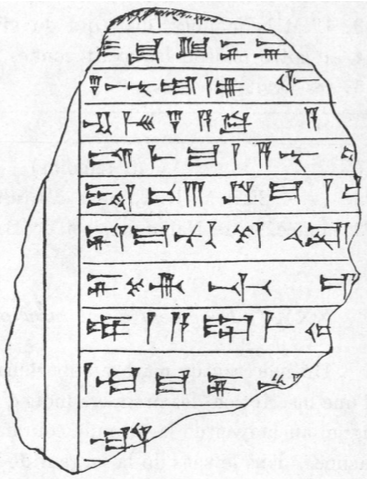
Scheil, RA 14 pp. 159–160
A stone fragment of unknown provenance is engraved with a portion of text recording one of Adad-nārārī III's western campaigns, although it itself too broken to see exactly which one.
Access the composite text [http://oracc.museum.upenn.edu/riao/Q004752/] of Adad-nārārī III 04.
Bibliography
5 - Stele of Dūr-Katlimmu
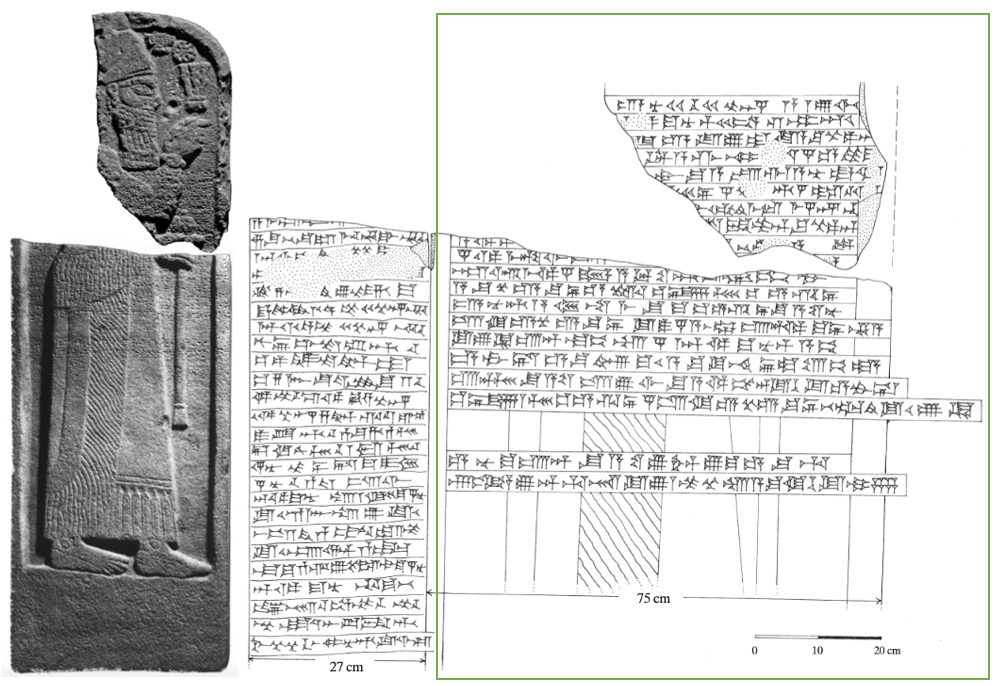
BM 131124 (© The Trustees of the British Museum) and the Geneva fragment (elaboration from Radner AoF 39 pp. 267-268)
Two stone stele fragments from Dūr-Katlimmu (mod. Tell Šeik Hammad) show a portrait of Adad-nārārī III's head in relief with divine symbols and an inscription crossing the portrait from the shoulders of the king to approximately the half of his legs. The monument is engraved with two inscriptions. The first inscription belongs to Adad-nārārī III and is engraved on the front of the monument on both fragments. The British Museum fragment preserves the end of the first ten lines, and the Geneva fragment, whose surface is better preserved than that of the other piece, has the beginnings of lines 9–10 and all of 11–20.
Grayson (RIMA 3, p. 206) had already noted that the phrasing of the text is very similar to that of text no. 7, and like that one, possibly continued with the name Nrgal-ēreš and a statement about the territories governed by him. And indeed the discovery of the Geneva fragment confirmed this theory, as the side of the object was engraved with and inscription belonging to this powerful governor. That inscription is here edited as text no. 2018 add.
Access the composite text [http://oracc.museum.upenn.edu/riao/Q004753/] of Adad-nārārī III 05.
Bibliography
6 - Stele of Sabaʾa
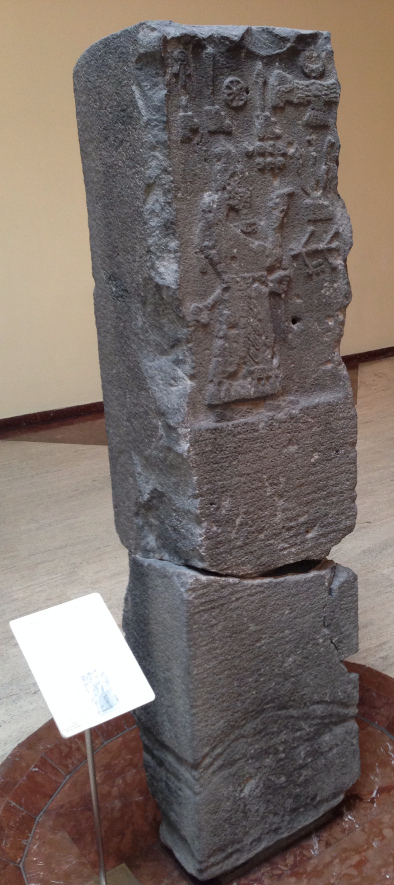
IIst EŞEM 02828 (from Wikipedia [https://upload.wikimedia.org/wikipedia/commons/8/8f/Sabaa_Stele.jpg])
At Sabaʾa, south of Jebel Sinjar was found a stele showing a portrait of the king in relief with divine symbols on the top and a text inscribed below. The particularity of this inscription is that its first part (circa two-thirds, lines 1-22) are a royal inscription, whereas the second part is an inscription of Nergal-ēreš, a governor of Adad-nārārī III.
The text begins with a dedication to the god Adad and with the king's name, epithets and genealogy (lines 1-11a). It follows a record of the "fifth year," with the campaign against Ḫatti and the submission of Damascus. These events seem to be a brief summary of the camapaigns recorded in the eponym chronicle [/saao/Q007771.58 /].
The date fo the stela can be fairly certainly deducted by the presence of the toponym Ḫindanu among those under the jurisdiction of Nergal-ēreš, since this city was added to the governor's domain in 797 BC (see text no. 9).
Access the composite text [http://oracc.museum.upenn.edu/riao/Q004754/] of Adad-nārārī III 06.
Bibliography
7 - Stele of Tell al-Rimah
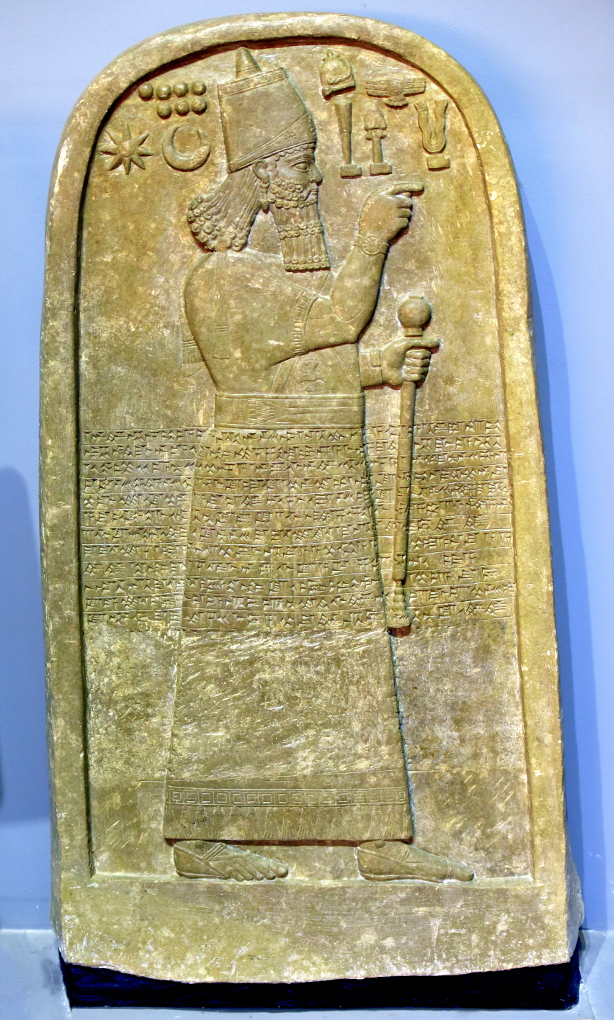
Stele of Tell al-Rimah (from Wikipedia [https://en.wikipedia.org/wiki/Tell_al-Rimah#/media/File:Stele_of_Adad-nirari_III.jpg])
A stone stele from the site of Tell al-RImah, near the Jebel Sinjar, was engraved with the text edited here. The stele was discovered beside the podium of a shrine, and like the stele of Sabaʾa (text no. 6), it is decorated with a portrait of the king in relief with the head flanked by divine symbols and the text inscribed below, in this case just below the king's waist. Also similar to the case of the stele of Sabaʾa and to that from Dur-Katlimmu (text nos. 5 and 2018 add), is the fact that the first part of the inscription (lines 1-2) is a royal dedicatory inscription to the god Adad, followed by king's name, epithets and genealogy, and by a brief record of a western campaign, but from line 13 onward, Nergal-ēreš is introduced with titles and the list of cities under his governorship; the text ends with a curse against whoever erases "one name from these names." Ironically, all the portion concerning Nergal-ēreš has been deliberately erased, presumably indicating a, possibly temporary, fall into discrace of this man (Grayson, RIMA 3, p. 210).
Access the composite text [http://oracc.museum.upenn.edu/riao/Q004755/] of Adad-nārārī III 07.
Bibliography
8
A broken stone slab from Nimrud was discovered by Loftus in 1854 at the edge of the mound between the North West and the South West Places. The text thereon inscribed starts with royal name and epithets, but with no genealogy. Then it summarizes Adad-nārārī III's conquests (lines 5b-14) and the records of two specific events, the submission of Damascus (lines 15-21) and the king's activities in Babylonia (22-24), is still readable before the fragment is broken.
Access the composite text [http://oracc.museum.upenn.edu/riao/Q004756/] of Adad-nārārī III 08.
Bibliography
9
A stone tablet found in the Ištar temple of Nineveh was, according to the text (rev. 22), meant to be on display in that building, because it was inscribed with a decree granting the province of Ḫindānu to Nergal-ēreš. Neverhteless, the format of the text very much resambles that of a royal inscription. The text starts with royal name and genealogy (obv. 1-3) followed by the abovementioned decree and a series of related statements.
Access the composite text [http://oracc.museum.upenn.edu/riao/Q004757/] of Adad-nārārī III 09.
Bibliography
10

AfO 7 p. 268
Various small cylinders of precious materials were found at Ashur. Many bear an inscription of Adad-nārārī III (see also text no. 11). Many others one of Šamī-Adad V (texts nos. 5-8).
Access the composite text [http://oracc.museum.upenn.edu/riao/Q004758/] of Adad-nārārī III 10.
Bibliography
11
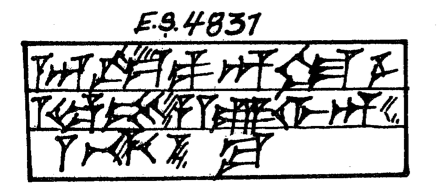
Ist EŞEM 04831
Two small stone cylinders from Ashur bear this text, which is an abbreviated version of text no. 10.
Access the composite text [http://oracc.museum.upenn.edu/riao/Q004759/] of Adad-nārārī III 11.
Bibliography
12

VA Ass 04302a
Some bricks from Ashur are stamped with this inscription recording Adad-nārārī III's works on the facing of the Aššur temple. Note that the geometric drawing on the side of the inscription is part of the stamp.
Access the composite text [http://oracc.museum.upenn.edu/riao/Q004760/] of Adad-nārārī III 12.
Bibliography
13
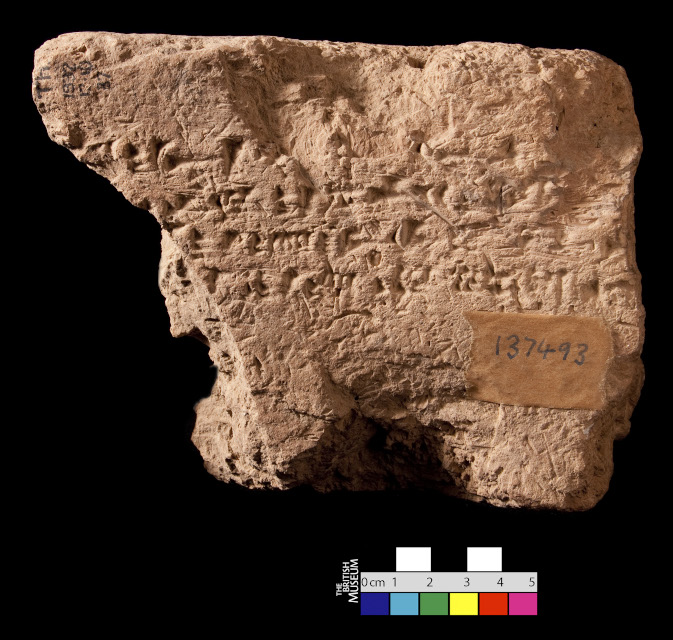
BM 137493 © The Trustees of the British Museum
These bricks coming from Nineveh are inscribed with a text that records Adad-nārārī III finishing the palace started by his father Šamšī-Adad V.
Access the composite text [http://oracc.museum.upenn.edu/riao/Q004761/] of Adad-nārārī III 13.
Bibliography
14
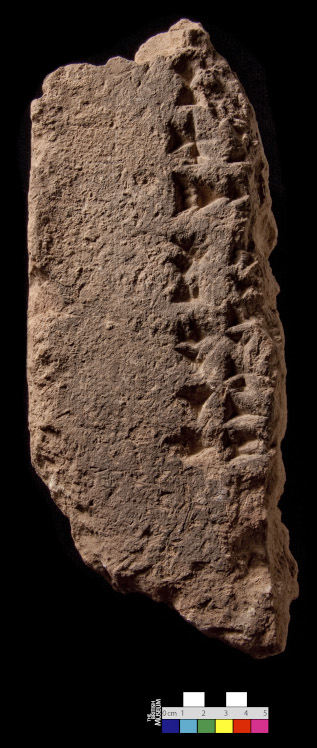
BM 137463 © The Trustees of the British Museum
This text, inscribed on bricks from Nineveh, records work on the Nabû temple there.
Access the composite text [http://oracc.museum.upenn.edu/riao/Q004762/] of Adad-nārārī III 14.
Bibliography
15
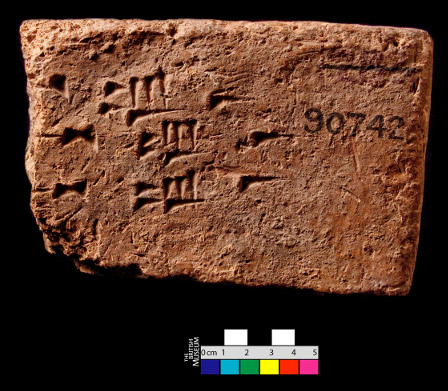
BM 090742 (ex. 3) © The Trustees of the British Museum.
Text inscribed on numerous bricks from Nineveh. Exemplar no. 1 was found at Neb Yunus, while most of the others come from Kuyunjik.
Access the composite text [http://oracc.museum.upenn.edu/riao/Q004763/] of Adad-nārārī III 15.
Bibliography
16
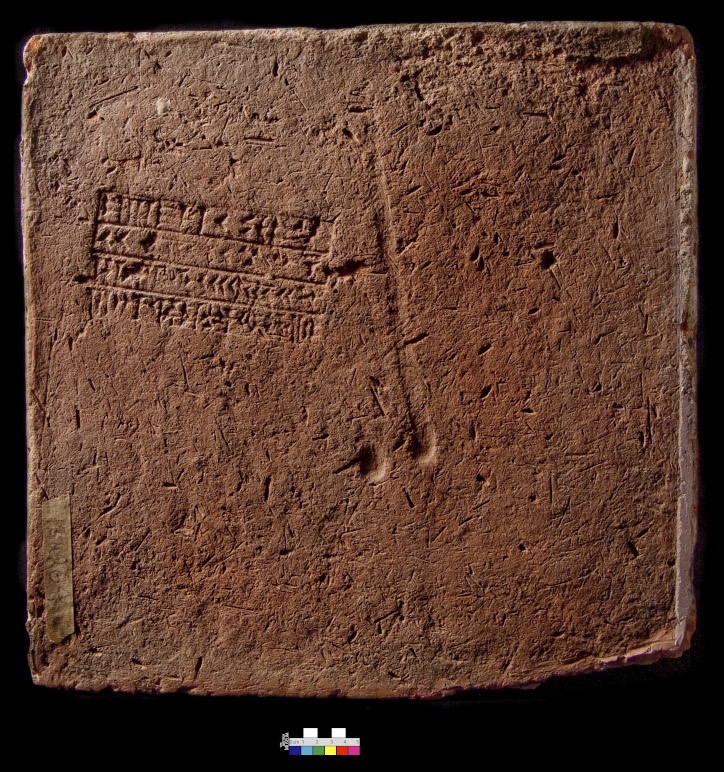
BM 132264(ex. 2) © The Trustees of the British Museum.
This label is stamped on bricks found in the bathroom of Adad-narari's palace at Calah.
Access the composite text [http://oracc.museum.upenn.edu/riao/Q004764/] of Adad-nārārī III 16.
Bibliography
17
The text of an inscribed brick found in a bathroom (not the same as A.0.104.16) at Fort Shalmaneser (NW 3) has not been published.
Access the composite text [http://oracc.museum.upenn.edu/riao/Q004765/] of Adad-nārārī III 17.
Bibliography
18
The text of an inscribed brick of Adad-narart, which was discovered at Fort Shalmaneser (S 35), has never been published.
Access the composite text [http://oracc.museum.upenn.edu/riao/Q004766/] of Adad-nārārī III 18.
Bibliography
19
Two inscribed clay hands of Adad-nārārī ("Vul-nirari") were found by George Smith at Calah. The inscriptions were never published and the location of the objects is unknown.
Access the composite text [http://oracc.museum.upenn.edu/riao/Q004767/] of Adad-nārārī III 19.
Bibliography
20
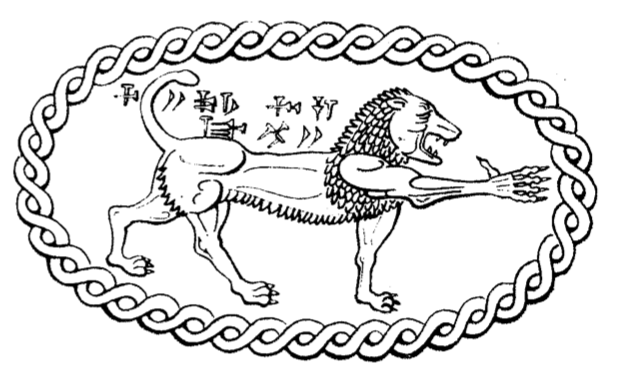
IM 064209. Parker, Iraq 24 p. 39
This broken text appears on an incomplete seal impression on a clay docket found at Calah. The inscription appears in the '"negative" or "mirror" form, which means that it was engraved on the seal as a "positive."
Access the composite text [http://oracc.museum.upenn.edu/riao/Q004768/] of Adad-nārārī III 20.
Bibliography
21
This text, with a dedication to the god Aššur, is partially preserved on fragments of clay cones found at Assur.
Access the composite text [http://oracc.museum.upenn.edu/riao/Q004769/] of Adad-nārārī III 21.
Bibliography
Nathan Morello
Nathan Morello, 'Inscriptions, texts nos. 1-21', The Royal Inscriptions of Assyria online (RIAo) Project, The RIAo Project, a sub-project of MOCCI, 2020 [http://oracc.museum.upenn.edu/riao/theassyrianempire883745bc/adadnarariiii/texts121/]